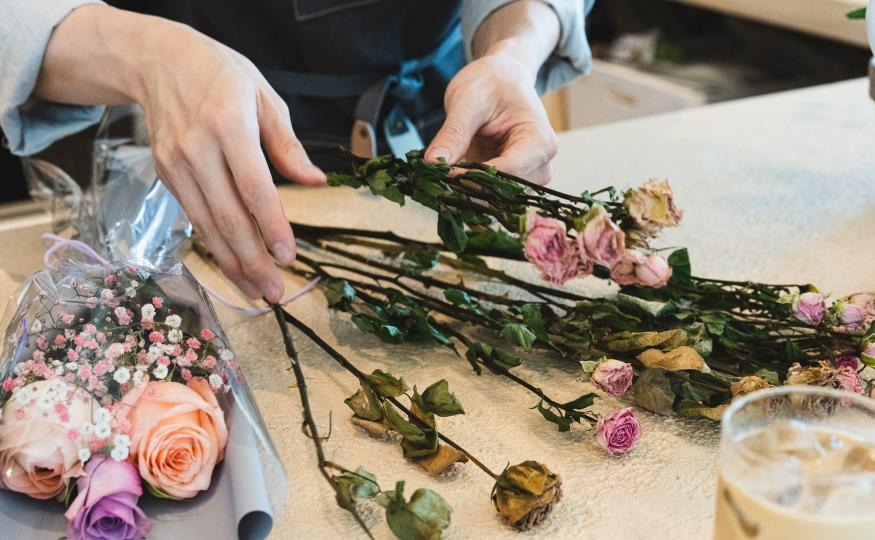
There’s nothing quite like a bouquet of fresh flowers to brighten a room, lift your mood, and add a touch of natural beauty to any space. Whether gifted, purchased, or picked from your garden, fresh flowers bring joy—but that joy doesn’t have to fade too soon.
In this guide, we’ll explore the average lifespan of different types of fresh flowers and share powerful, expert-backed tips to help you extend their vase life. With just a few simple tricks, your blooms can stay vibrant and beautiful much longer than you think!
How Long Do Fresh Flowers Usually Last?
The lifespan of fresh flowers varies depending on the flower type, the condition they were in when purchased, and how well they’re cared for. Here’s a general guide to how long popular blooms last in a vase:
• Tulips: 5–7 days
• Roses: 7–10 days
• Lilies: 10–14 days
• Daisies: 7–14 days
• Sunflowers: 6–12 days
• Carnations: 14–21 days
• Orchids: 14–21 days
• Hydrangeas: 5–10 days
• Peonies: 5–7 days
Keep in mind, those are average numbers—meaning with a little extra TLC, you can often stretch their life by a few more days.
Why Do Flowers Wilt?
Before jumping into solutions, it helps to understand what causes flowers to wilt prematurely. The main culprits include:
• Bacteria in the water
• Clogged stems that can’t absorb water
• Ethylene gas emitted by other wilting flowers or fruits
• Lack of nutrients
• Improper temperature or light exposure
Now let’s move on to how you can stop these floral foes in their tracks.
Powerful Tips to Make Fresh Flowers Last Longer
1. Trim the Stems at an Angle
Before placing your flowers in water, trim 1–2 inches off the stems at a 45° angle. This boosts water absorption by exposing more surface area and keeps stems from lying flat at the vase’s base, where they might rot or struggle to take in water.
🌼 Pro Tip: Re-trim the stems every 2–3 days to keep water flowing freely.
2. Remove Extra Leaves
Remove any leaves that would be submerged below the waterline. Leaves submerged in water rot quickly, which can spread bacteria and cause your bouquet to fade faster.
3. Use Clean Vases and Fresh Water
Always start with a sparkling clean vase and room-temperature water. Dirty vases are a breeding ground for bacteria, which can cause flowers to wilt faster. Refresh the water every 2 days.
🌿 Bonus Tip: Rinse stems with clean water during each water change.
4. Add Flower Food—Or DIY Your Own
Most floral arrangements come with a small packet of flower food, which contains:
• Sugar (for energy)
• Acid (to maintain pH)
• Biocide (to prevent bacteria)
No packet? Combine 1 teaspoon of sugar, 1 teaspoon of bleach, and 2 teaspoons of lemon juice in 1 liter of warm water to create an effective DIY flower preservative.
5. Keep Flowers Cool and Out of Direct Sunlight
Place your bouquet in a cool area away from direct sunlight, heaters, or vents. Heat causes flowers to dehydrate and wilt faster. Ideal temperature? Around 18–22°C (65–72°F).
☀️ Avoid placing flowers near ripening fruit, which emits ethylene gas that can age flowers prematurely.
6. Give Each Stem Space to Breathe
Don’t overcrowd your vase. Proper spacing allows air to circulate, reduces the spread of bacteria, and helps each flower absorb nutrients more efficiently.
7. Watch for Wilting Flowers
Remove any wilted or dying flowers immediately—they release ethylene gas, which encourages nearby blooms to follow suit. Keep your bouquet looking (and smelling) its best by curating it as needed.
8. Special Tip for Tulips and Acidic Flowers: Add a Copper Coin
Tulips, known for continuing to grow in the vase, benefit from cold water and a little help in maintaining their structure. Placing a copper coin in the vase helps reduce bacteria and allows the flowers to stay fresher and stand taller for a longer time.
Extend the Life of Cut Flowers: The Mythbusters Edition
There are a lot of DIY flower hacks floating around online. Some work, others… not so much. Here’s a quick truth check:
• Aspirin in water? Not proven to help much.
• Vodka? A few drops may delay wilting, but overuse can harm stems.
• Refrigerating flowers overnight? Yes! Cooler temperatures slow down wilting.
Final Thoughts: Love Your Flowers, and They’ll Love You Back
Fresh flowers are more than decoration—they’re a mood booster, a heartfelt gift, and a reminder of nature’s delicate power. With these expert flower care tips, you can make every bouquet last longer and look lovelier. Be it a romantic surprise, a joyful gift, or a little indulgence for yourself, your flowers deserve thoughtful care to keep their beauty shining.
So grab those scissors, prep that vase, and show your flowers a little love—they’ll return the favor with vibrant beauty that lasts.
Need a fresh flower fix?
Check out inbloom.id’s handcrafted arrangements are designed to delight and stay stunning longer—with every petal telling a story of care and charm.
